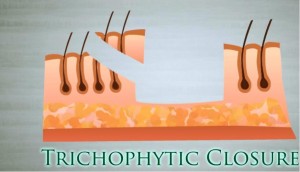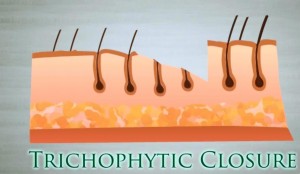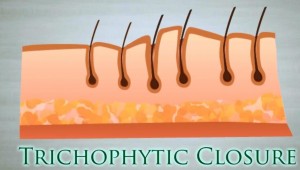Hair Transplant Scar Revision
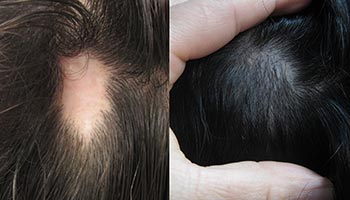
Hair transplant scar revision is a procedure that removes scars of hair transplant in the donor area. The end result is a minimal looking scar that can easily be concealed.
Many older hair transplant techniques may leave a linear scar in the back of the scalp that is wide or hard to conceal. If somebody does have a scar from a previous hair transplant, Dr. Sean can remove that scar and suture the area again in order to reduce the width of the scar.
There are four factors involved. Typically, when a strip of tissue is removed for hair restoration, the width of the tissue is at least 1 cm. In scar revisions, the focus and goal is only to remove the scars. Dr. Sean uses a triple method technique to reduce scarring. The patient must do at least two weeks of scalp exercise prior to the procedure. Patients with wide scars may require longer. Dr. Sean also uses the trichophytic closure technique. In this technique, a special cut is made such that when the incision is closed , there is a slight overlap. This allows hair to grow into the the scar. This makes the area much less noticeable and patients can cut their hair much shorter than they could before the scar was revised.
Just like hair restoration Los Angeles, Dr. Sean performs a lot of scar revisions.
Since implementing the triple method technique in 2008, we have not had any patient that required scar revision.
ACELL is an extracellular matrix that promotes wound healing and decreases scarring. It is used for wound healing and provides a significant advantage in scar revision procedures.
Trichophytic closure refers to a specific closure method that causes hair to grow into the scar. During the actual procedure, special cut is made on the bottom edge. The two edges are then brought together with a slight overlap. When the wound has healed, the hair should grow at the level of the scar and camouflage it. Dr. Sean uses the trichophytic closure on every patient.
The 3 steps of the the trichophytic closure. (top picture) Once the strip is removed, a special cut is made on the bottom edge. This way hair grows out, and the hairs grow into the level of the scar (middle and bottom pictures).
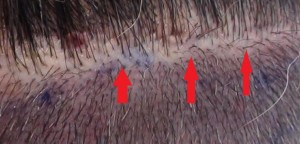
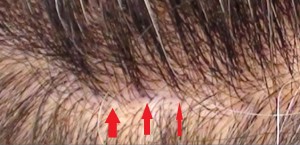
Double-layer closure refers to the special closure of the wound. When a strip is removed, the inner layer is sutured completely with dissolvable sutures, then the outer edges are also closed using staples. This double closure technique leads to minimal scarring.
No, there will still be very light scar visible, however it will be minimized, and easily camouflaged.

